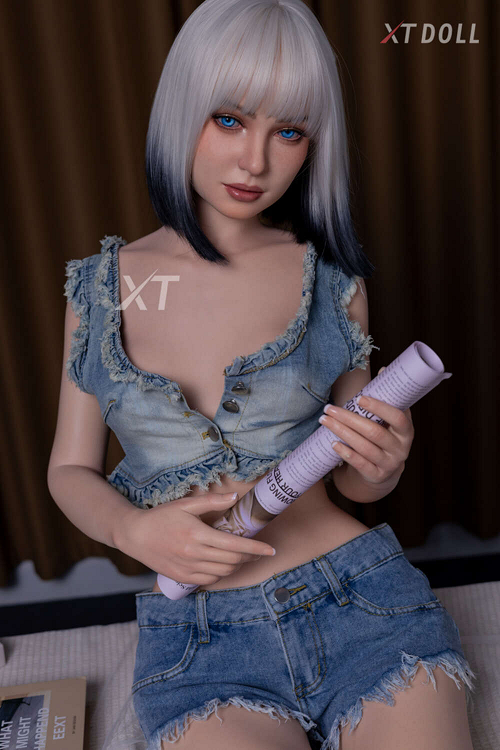
The longevity and quality of a sex doll depend heavily on the way its surface is maintained, especially after long-term use. Whether made from TPE (thermoplastic elastomer) or medical-grade silicone, the material undergoes constant stress from cleaning, friction, and environmental exposure. Without proper care, the surface may begin to show signs of aging, micro-damage, discoloration, or loss of elasticity.
This blog provides a technical, step-by-step guide for maintaining the surface of your doll after extended use.
✅ 1. Recognizing the Signs of Surface Aging
After prolonged use, sex dolls often develop specific changes on their surface:
Loss of softness due to dehydration of the outer layers.
Small cracks or cuts from repeated friction or stretching.
Discoloration caused by fabric dye transfer or UV exposure.
Increased stickiness in TPE dolls when protective powder wears off.
Surface roughness from inadequate lubrication or cleaning routines.
👉 Identifying these issues early allows corrective action before the material deteriorates further.
🧴 2. Cleaning Protocols for Long-Term Use
Proper cleaning after every session is critical, but dolls that have been used for years require special attention.
Gentle soap & lukewarm water – Always use mild antibacterial soap free from alcohol and strong chemicals.
Pat dry instead of rubbing – A microfiber cloth is recommended to avoid scratches.
Powder application – Apply cornstarch or renewal powder to restore smoothness.
Deep cleaning cycles – Once every 2–3 months, use professional cleaning sprays or foams designed for TPE or silicone.
⚠️ Avoid harsh detergents, alcohol-based cleaners, or immersion in hot water, as they accelerate surface wear.
🛠️ 3. Repairing Surface Imperfections
Over years of use, small imperfections are inevitable. Fortunately, minor repairs can extend the lifespan significantly.
For TPE dolls:
Small cuts can be treated with TPE glue, applied carefully with a precision tool.
Heat repair techniques (using a hot-air device at controlled temperature) can smooth out surface scratches.
For silicone dolls:
Use medical-grade silicone adhesive for sealing cracks.
Pigment restoration kits help fix discoloration or fading.
✅ Pro tip: Always perform repairs in a well-ventilated environment and test adhesives on a hidden area first.
🌡️ 4. Preventing Further Surface Degradation
Long-term users often make the mistake of reactive care, only addressing issues once they appear. Instead, proactive steps should be taken:
Store the doll in stable room temperature (18–25°C).
Keep it away from direct sunlight and UV lamps.
Avoid tight clothing with dark dyes that may transfer.
Regularly rotate resting positions to prevent pressure marks.
🛡️ 5. Protective Coatings and Treatments
Advanced users can enhance longevity by applying protective surface treatments:
Mineral oil (TPE only) – Restores lost elasticity when applied sparingly.
Protective powders – Maintain a smooth, non-sticky surface.
UV-protective sprays – Prevent fading and surface hardening.
⚠️ These treatments must always be compatible with the doll’s base material.
📦 6. Safe Storage Practices After Years of Use
The way a sex doll is stored becomes even more important as the material ages.
Neutral resting position: Arms and legs slightly apart to reduce joint strain.
Cotton or satin sheets: Prevent color transfer and allow airflow.
Vertical hanging storage: Reduces surface compression and deformation.
Climate control: Store in cool, dry places away from humidity.
✅ Long-term storage with care ensures that even after years of use, the doll remains in good condition.
🔧 7. Advanced Surface Restoration
For users who want to rejuvenate older dolls:
Airbrush repainting can restore faded skin tones.
Professional surface sealing improves resistance to further wear.
Replacement of modular parts (heads, wigs, or inserts) refreshes the appearance.
In many cases, these techniques can add several years of usability to a doll.
📊 8. Comparative Durability: TPE vs. Silicone
| Feature | TPE Dolls | Silicone Dolls |
|---|---|---|
| Elasticity | Highly flexible, soft, realistic feel | More rigid, but resistant to deformation |
| Surface sensitivity | Prone to stickiness, requires powdering | Naturally smooth, less frequent treatment |
| Repairability | Easy with glue and heat methods | Requires specialized adhesives |
| Longevity | 3–5 years with proper care | 7–10 years with proper care |
🏆 9. Conclusion
Surface care after long-term use is not just about aesthetic preservation but also about functional safety and hygiene. With the right combination of cleaning, repair, protective treatments, and storage methods, you can significantly extend the lifespan of your TPE or silicone doll.
✅ Remember: Preventive care is always better than corrective care. Treating your doll’s surface with professional attention will ensure years of continued enjoyment.



























